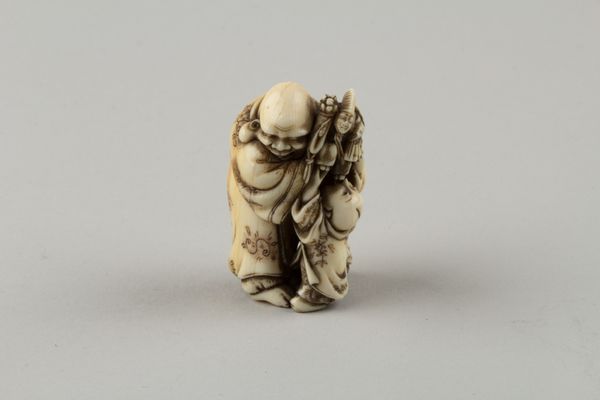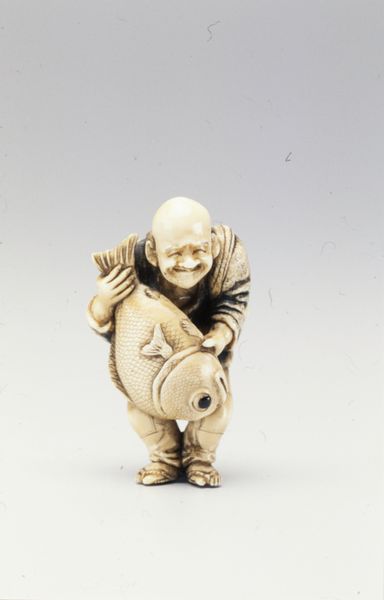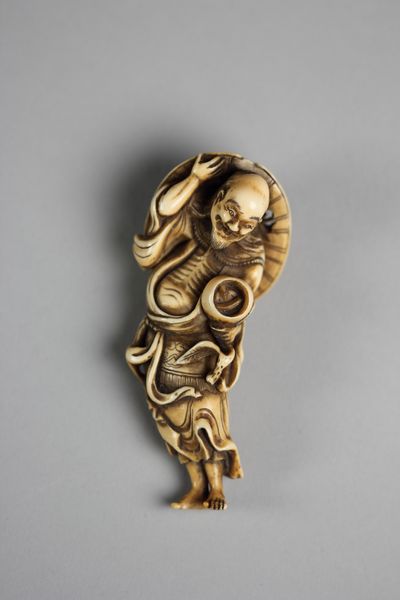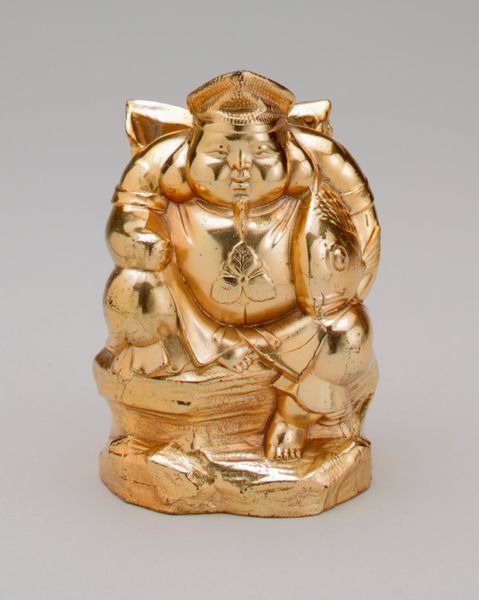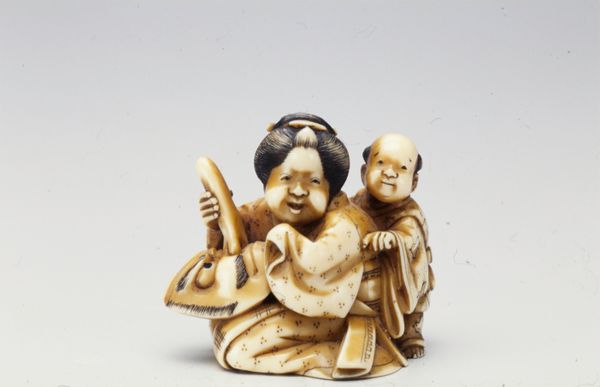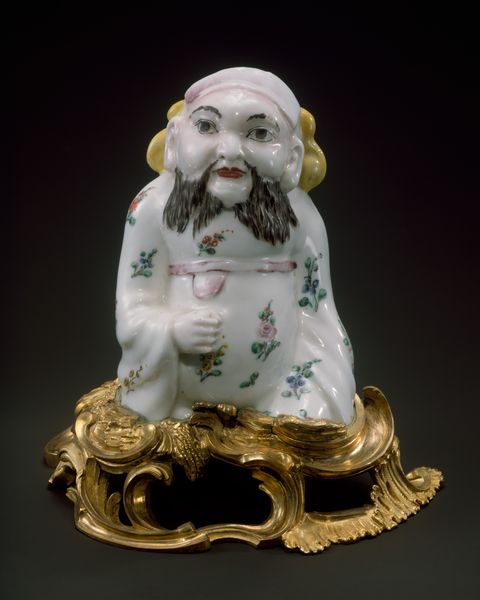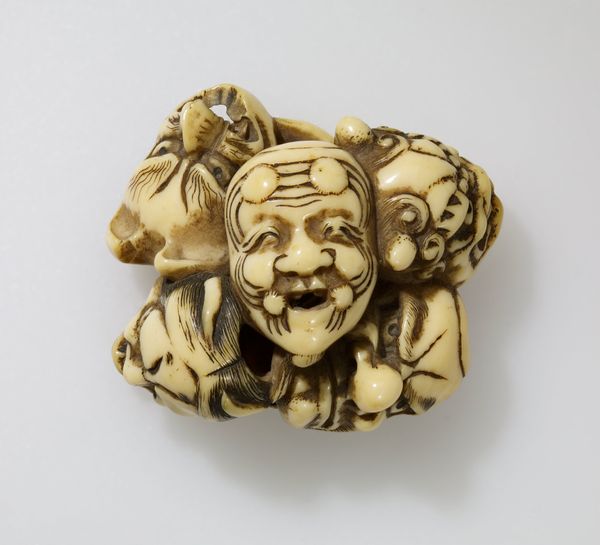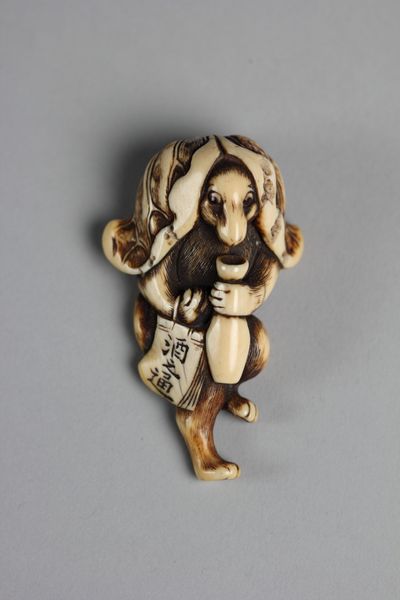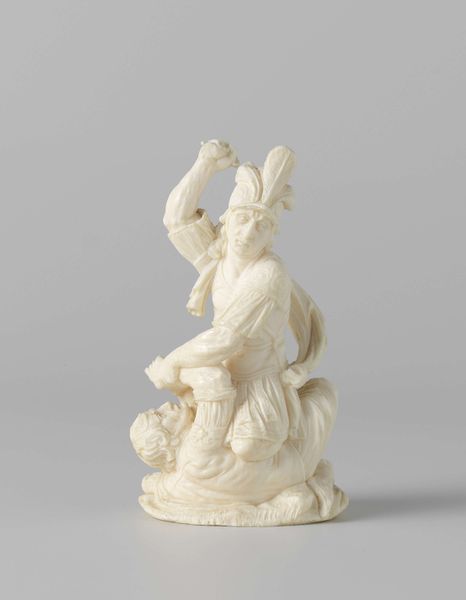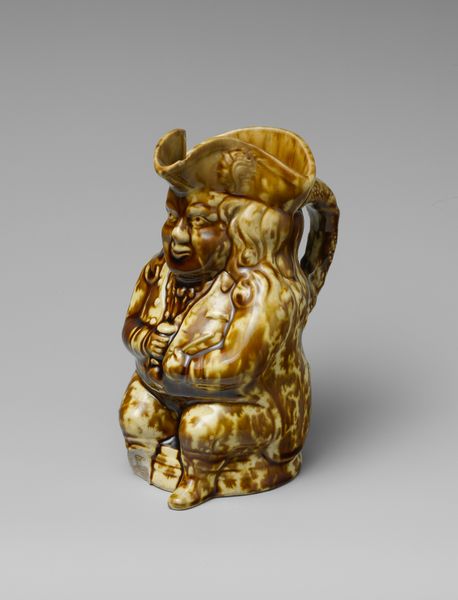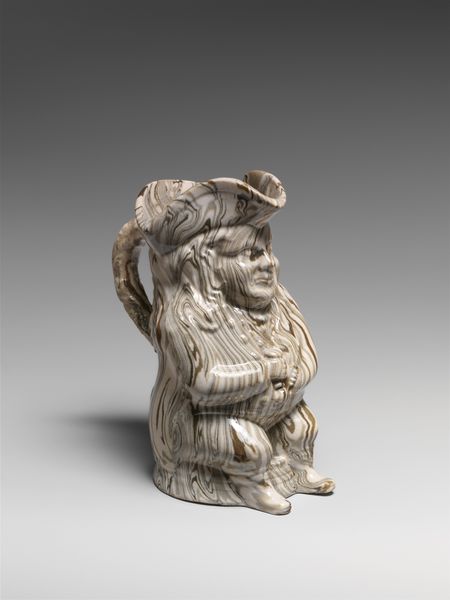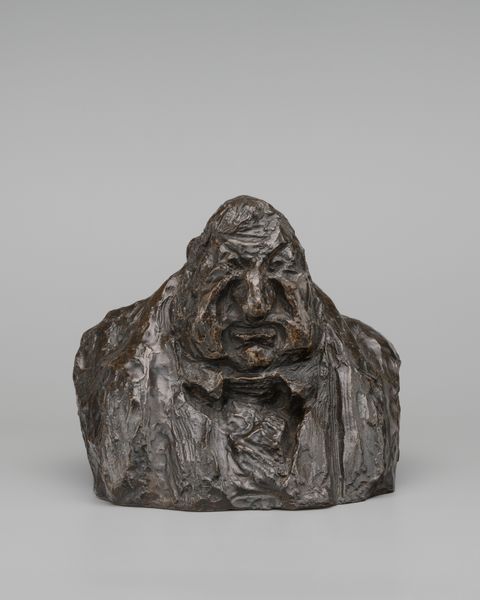
carving, sculpture, wood
#
portrait
#
carving
#
sculpture
#
asian-art
#
figuration
#
sculpture
#
wood
#
miniature
Dimensions: H. 2 1/4 in. (5.7 cm); W. 1 1/2 in. (3.8 cm); D. 3/4 in. (1.9 cm)
Copyright: Public Domain
This is a small ivory carving of Chōkarō Sennin, a figure from Chinese folklore, by the artist Yoshitomo. These figurines, known as netsuke in Japan, served a practical purpose, acting as toggles for securing pouches and other personal items worn on the kimono. Yet, beyond utility, they became miniature works of art, reflecting the cultural values and beliefs of their time. Chōkarō Sennin, known for his magical horse that emerges from a gourd, embodies the Daoist ideal of transcending earthly limitations. Made in Japan, it likely reflects the rise of the merchant class during the Edo period. The demand for luxury items such as netsuke grew, fostering a thriving artistic culture. Understanding netsuke requires delving into historical records, examining trade routes, and studying social structures. What can this carving tell us about cultural exchange and the changing values of the time?
Comments
No comments
Be the first to comment and join the conversation on the ultimate creative platform.
